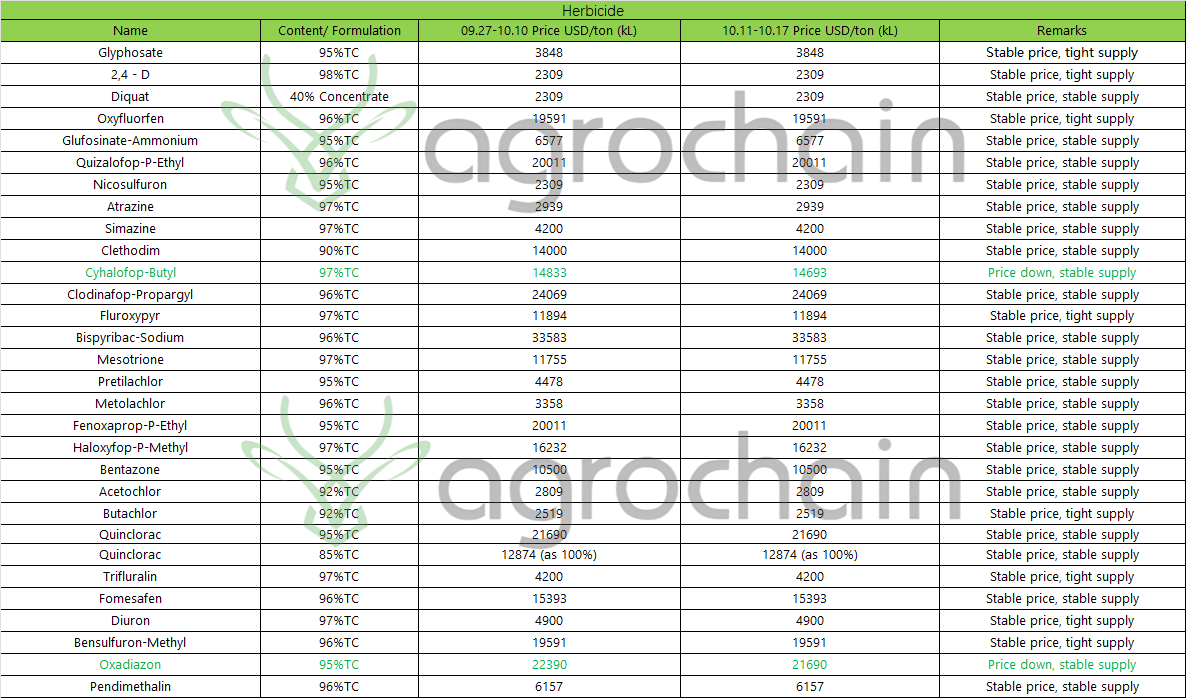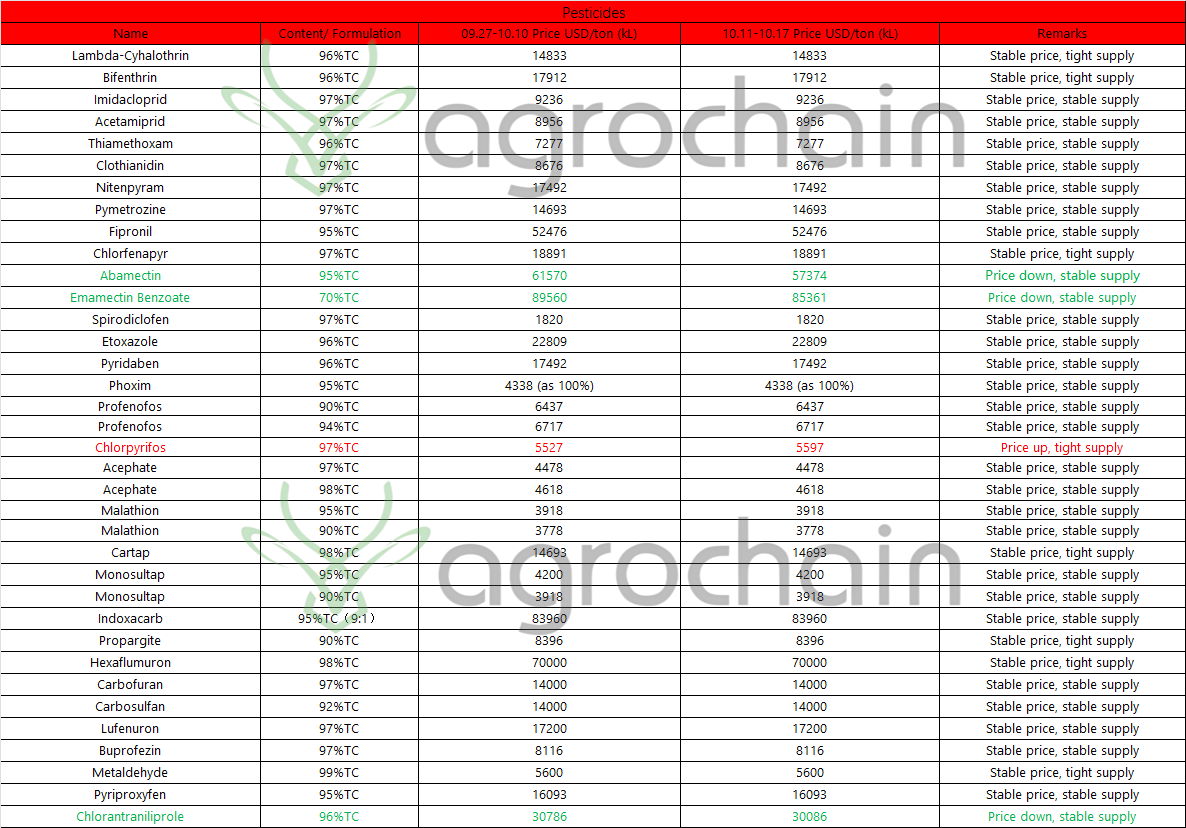Pesticide Market Trend in Mid-October 2025: Most Prices Stable, These Varieties Fluctuate!
The ups and downs of the pesticide market always keep agricultural material practitioners on their toes. In mid-October 2025, the prices and supply-demand of herbicides, fungicides, and insecticides showed a pattern of "mostly stable with partial adjustments". Today, we will dissect the key information to help you grasp the market pulse!
1. Herbicides: Price Drops in Two Varieties, Tight Supply for Multiple Types
In the herbicide camp, "veterans" such as Glyphosate, 2,4-D, Diquat, and Oxyfluorfen maintained stable prices. Moreover, Glyphosate, 2,4-D, and Oxyfluorfen were in a state of "stable price and tight supply", indicating the strong rigid demand for these conventional herbicides in the market.
However, there were exceptions. Cyhalofop-Butyl dropped from 2076 USD/ton to 2056 USD/ton, and Oxadiazon decreased from 3133 USD/ton to 3035 USD/ton. Fortunately, both maintained stable supply. The price drops might result from phased competition or capacity release. Varieties like Quizalofop-P-Ethyl and Nicosulfuron continued their "stable price and supply" performance.

2.Insecticides: Price Increase of chlorpyrifos; Price Drops of Abamectin, Emamectin Benzoate, and Chlorantraniliprole
The price fluctuations of insecticides were more diverse. Chlorpyrifos rose from 5530 USD/ton to 5600 USD/ton and had tight supply, becoming one of the few insecticide varieties with a price increase, probably due to rising raw material costs or sudden surge in demand.
On the other hand, Abamectin dropped from 61570 USD/ton to 57370 USD/ton, Emamectin Benzoate decreased from 89560 USD/ton to 85360 USD/ton, and Chlorantraniliprole fell from 30800 USD/ton to 30090 USD/ton. All three had stable supply, and the price drops might be the result of market competition and capacity adjustment.
There were also many varieties with tight supply. Lambda-cyhalothrin, Bifenthrin, Chlorfenapyr, Monosultap, and Teflubenzuron had tight supply, and Metaldehyde was even in tight supply. These varieties had high demand, and the supply tightness gave their prices considerable resilience. Most varieties such as Imidacloprid and Thiamethoxam maintained stable prices and supply.

3. Fungicides: Price Drops in Difenoconazole and Kresoxim-methyl; Tight Supply for Tebuconazole and Carbendazim
The fungicide market was generally stable, but there were some highlights. Difenoconazole fell from 35000 USD/ton to 34280 USD/ton, and Kresoxim-methyl decreased from 27980 USD/ton to 26590 USD/ton. Both had stable supply, providing room for cost adjustment in the market.
Looking at the varieties with tight supply, Tebuconazole, Carbendazim, and Iprodione were marked as "tight supply", and Azoxystrobin also faced tight supply. These varieties had strong demand, and the supply pressure made them appear tight while maintaining stable prices. It was likely that this supply-demand relationship would support prices in the short term. Most varieties such as Difenoconazole and Propiconazole remained stable in both price and supply.

Summary: Supply-Demand is the Core, Agricultural Material Practitioners Need to Monitor Dynamics
In general, the pesticide market in mid-October showed the characteristic of "mostly stable with partial adjustments". Whether it was herbicides, fungicides, or insecticides, there were varieties with stable prices and tight supply, as well as cases of price increases or decreases. Supply-demand relationship was the core logic affecting prices.
All agricultural material operators and farmers should pay close attention to these market changes and reasonably arrange procurement and medication plans according to their own needs to calmly cope with possible price fluctuations and supply-demand changes!


